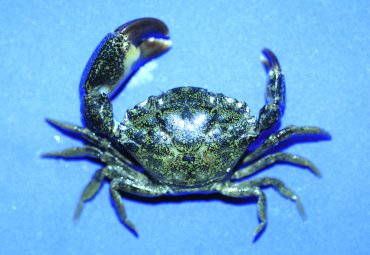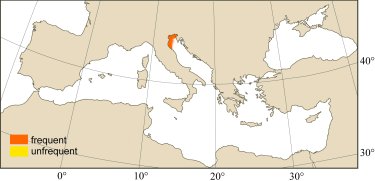
|
Relevant Synonyms
Misidentification
|
|
| photo: Carlo Froglia |
|
SHORT
DESCRIPTION
color :
carapace and chelipeds dark olive green to brown, with smaller darker speckles. Chela with black fingers.
common size : |
DISTINGUISHING CHARACTERISTICS
BIOLOGY / ECOLOGY
habitat :
in the Northern Adriatic mainly found in shallow brackish waters on soft bottoms with sparse stones and mussel beds. |
|
1st
MEDITERRANEAN RECORD
|

|
|
DISTRIBUTION
|
ESTABLISHMENT SUCCESS
speculated reasons for success :
|
|
|
MODE OF
INTRODUCTION |
IMPORTANCE TO
HUMANS |
|
KEY
REFERENCES
|
|
|